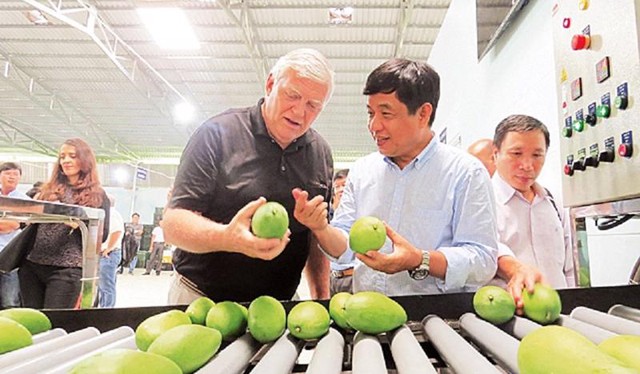U.S. remains potential market for Vietnamese fruits
VGP - With a population of over 330 million people and a high purchasing power, the U.S. is among key importers of Vietnamese fruits, especially seasonal ones.

Illustration photo
The current distribution system of the U.S. market is very diverse with many distribution channels such as supermarkets, farmers' markets, grocery stores, e-commerce, in addition to its diversity and openness in a culture that motivates consumers to test novel and nutritious products good for health, especially tropical fruits.
So far, eight types of Vietnamese fruits have been shipped to the U.S., namely dragon fruit, rambutan, longan, lychee, star apple, mango, and pomelo and coconut.
According to U.S. regulations, fruit exports must meet strict US standards relating to fruit cultivation areas and fruit packing facilities. Along with these rules, products must also be irradiated at a assigned factory under the supervision of the Animal and Plant Health Inspection Service (APHIS) of the U.S. Department of Agriculture.
All Vietnamese fruits entering this market must obtain both VietGAP and GlobalGAP certifications.
Dragon fruit became the first Vietnamese fruit exported to the US in 2008, followed by rambutans in 2011.
Three years later the U.S. Department of Agriculture officially licensed the import of longans and lychees from Viet Nam.
The fifth Vietnamese fruit to get the green light to enter the U.S. market was star apples, which arrived in the U.S. in December 2017.
In 2019 mangoes officially became the sixth Vietnamese fruit making inroads into the U.S.
In 2022, Pomelo was the seventh fresh fruit of Viet Nam to be licensed to enter the U.S. market. The U.S. officially initiated trade for Vietnamese coconuts in August, 2023.
The Vietnamese agriculture sector expects that the U.S. will allow more types of Vietnamese fruits to enter the market, increasing the total number of fruits exported to this country to nine.
Viet Nam earned US$3.5 billion from fruit and vegetable exports in the first six months of this year, up 28 percent from to the same period last year, according to the Ministry of Agriculture and Rural Development./.
